“I am neither in nor out. / I am in between. / I am not a part of anything. / I am a shadow of something. / At best, / I am a thing that / does not really / exist. / I am weightless, / a speck of time / in Gaza. / But I will remain / where I am.” —Mosab Abu Toha, Displaced
”What confronts us today is a life that is exposed to a violence without precedent precisely in the most profane and banal ways” —Giorgio Agamben, Homo Sacer
I: The State of Exception
It is a simple truth that Palestinians have never been governed according to the same laws as Israeli Jews. According to the settler-colonial state of Israel, the sovereign that governs Palestinian life in Palestine, Palestinians cannot be subjects of a ‘normal’ legal order, neither individually nor as people. Simply put, Palestinian peoplehood and personhood are foreclosed in relation to the sovereign. The law does not apply to the Palestinian people. It has been permanently suspended for at least seventy-five years.
Giorgio Agamben terms this situation the state of exception. The state of exception is produced when the sovereign (in this case, the occupying force of Israel) suspends the force of the law, thus placing subjects into a “relation of exception” by which they are tied to the law by their exclusion from it.[1] Agamben’s theorization of the state of exception follows Michel Foucault’s insight that both law and the strategic breach of law are coordinating elements in the exercise of sovereign power. The state of exception is imposed through the “irruptive assertion” of sovereignty acting to re-assert itself “without rule, with urgency and necessity, and dramatically.”[2] Agamben thinks of the USA Patriot Act as an exemplary case of the creation of a state of exception:
Not only do the Taliban captured in Afghanistan not enjoy the status of POWs as defined by the Geneva Convention, they do not even have the status of persons charged with a crime according to American laws. Neither prisoners nor persons accused, but simply “detainees,” they are the object of a pure de facto rule, of a detention that is indefinite not only in the temporal sense but in its very nature as well, since it is entirely removed from the law and from judicial oversight.[3]
Those placed in the state of exception are reduced to what Agamben terms bare life. Bare life is unqualified life, distinguished from inanimate matter only by the simple fact of existence as a biological organism in possession of the property of life. Those reduced entirely to bare life possess an absolute capacity to be killed at the whim of the sovereign.[4] The interior and exterior of the law are coordinating elements in the power over life and death—nakedly displayed as the originary foundation of sovereign power by the killing of those reduced to bare life.[5]
Israel and its imperialist partners perpetuate the state of exception throughout Palestine so that they can exercise power over Palestinians with total impunity and preempt the possibility of Palestinian self-determination.[6] Israel, it is often noted, bears striking similarities to the segregationist and apartheid states we like to think of as left behind in the 20th century. A convoluted, highly fragmented geo-legal regime governs Palestinians in different parts of Palestine through a variety of overlapping but distinct techniques.
In the West Bank, the state of exception is materialized as a meticulously constructed regime of checkpoints and a highway system designed to segregate the colonizers and the colonized and the domination of the colonized by the colonizers. Palestinians in the West Bank are considered stateless. They are subject to a legal regime composed of well over 1,800 military orders, under which they can be detained, disappeared, and killed without recourse. Their homes and villages, too, can be stolen out from under them at any moment.[7]
In the Gaza Strip, the state of exception is materialized by a massive border fence and another, even stricter checkpoint regime. The state of exception perpetuated in Gaza by the Zionist state has frequently been compared, with good reason, to that imposed on the bantustans of apartheid South Africa. It is no coincidence that Israel and apartheid South Africa were close collaborators over several decades.[8] Like in the West Bank, Palestinians in Gaza are considered stateless. They are almost never allowed to leave the Strip, and few from outside are ever allowed to enter. For Palestinians, this entails the permanent separation of families, lack of access to holy sites (both Muslim and Christian), and the inability to return to their homes, villages, and cities, despite their close proximity.[9]
In East Jerusalem, Palestinians are frequent targets of racist violence by Jewish settlers and the Israeli military. They are discriminated against by zoning, planning, and building policies that privilege Jewish people (and, to a lesser extent, other non-Palestinian groups). These policies deprive Palestinians in East Jerusalem of basic needs, such as healthcare, water, sanitation infrastructure, electricity, and housing. Palestinians in the West Bank suffer from similarly discriminatory policies, and Palestinians in both Gaza and the West Bank have long been deprived of many of the same basic needs. According to Amnesty International, “the denial of essential services is intended to create unbearable living conditions to force Palestinians to leave their homes to allow for the expansion of Jewish settlement.”[10]
Palestinian citizens of Israel are denied many of the rights and benefits allowed to Israeli Jews. Like all Palestinians, they are subject to harassment and violence by Israeli Jews and the Israeli military. Arbitrary arrests, home demolitions, killings by the IDF and security agents, random interrogations, and discrimination in the workplace and education fill the everyday lives of Palestinian citizens. A highly disproportionate percentage of them live in poverty relative to Israeli Jews. More than 75 years of intentional segregation policies have pushed the majority of them into some of the poorest and densest parts of Israel—areas that paint a picture of Israel far darker than those proudly shown off on Birthright trips and in popular media. Many Palestinian citizens have family in the oPt, with whom they are almost never allowed to reunite (not even with spouses or children).[11]
By perpetuating the state of exception, Israel and its allies at once reinforce their own sovereignty—over Palestine as well as their global ‘sphere of influence’—and render Palestinian life bare. This is evident in the United States’ continuous undermining of efforts to hold Israel accountable under international law, as well as by Israel’s persistent denial of its legal status as a belligerent occupier in Gaza.[12] Agamben sees the state of exception as a product of the indistinguishability of the inside and outside of the law.[13] Neither Israel or its allies stand wholly outside the law—both, after all, continually reproduce the state of exception through the exercise of their sovereign power, domestically and through international bodies such as the United Nations.
The law inscribed in the United States’ and its allies’ so-called ‘rules-based international order” is upheld by the exceptional reduction of Palestinians to exterminable bare life. Israel, as founding political Zionist Theodor Herzl once hoped it would, plays a key role for American (and Western European) imperial interests as, “a rampart of Europe against Asia, an outpost of civilization as opposed to barbarism.”[14]
The state of exception that the U.S., Israel, and Germany (to name a few) has invested billions into perpetuating plays a key strategic role for imperialist interests in the Middle East. Only by preserving the state of exception can Israel maintain its existence as a fortified outpost for the imperialists. Maintaining that existence is crucial with respect to the geopolitical goals of the United States and its allies in the region. For one, Israel functions as a gigantic military base.[15] Along with Saudi Arabia, Israel plays a key role in deterring Iranian ambitions in the region through its extensive military and intelligence capabilities. Deterring Iranian ambitions, in turn, is crucial for Western economic interests throughout the Middle East (such as in fossil fuels) which could otherwise be ‘threatened’ by Iranian economic expansion in the region.[16]
The ‘rules-based international order,’ as is evident, is defined in relation to the state of exception—both for Palestinians specifically but also as a general rule. It is, in other words, always already in disorder. It is ordered by the intermittent and localized suspension of order; its rules are upheld in the longue durée in the very act of putting them out of play selectively and intermittently.
Israel and its imperialist allies, as seen over the past eight months, will go to any length necessary to uphold their sovereign power, up to and including genocide on a massive scale. Their ongoing genocide in Palestine, prosecuted with extraordinary vigor, has transformed the sum and substance of the state of exception that governs Palestinian life, and by which Palestinian life is excluded from (and included in by its exclusion from) the law. To understand this transformation, it first needs contextualized within a fuller history of the state of exception as a political technology, as well as how the Palestinian people have been steadily maneuvered into an ever-more-dangerous state of exception since the beginning of the 20th century.
II: The Advent of the Biopolitical
According to Agamben, the Third Reich is paradigmatic of what happens when the state of exception becomes the normal condition of/for life. The perpetual emergency declared by the Nazi government allowed Germany to sidestep the distinction between legality/illegality wherever it saw fit, allowing the Nazis (and their many accomplices) to freely prosecute their program of expansion, settlement, and extermination.
The Nazis are also (arguably) the most well-known practitioners of eugenics. Nazi racial theory prescribed eugenics as a necessity to maintain and increase the ‘purity’ of the Aryan ‘race.’ In Nazi Germany, eugenics were first implemented by laws against miscegenation, then further by forced sterilization, then even further by an extensively implemented euthanasia program. Of course, Nazi Germany was by no means unique in its eugenicist programmatic: the United States of America, as well as much of Western Europe, has a long history of laws barring ‘race-mixing,’ implementing forced sterilization, and codifying racist/ableist/etc forms of euthanasia.
The raison d’être of eugenicism is always, at base, to administer to the ‘health’ of the population, to the health of the body (social & individual) considered as a biological and social object. Eugenicism is therefore a fundamentally biopolitical technology. Biopolitics, according to Agamben, is a politics that integrates “man’s natural life in the mechanisms and calculations of power,”[17] and which takes bare life as its primary reference. The advent of the biopolitical, which Agamben considers fundamental to the coming-into-being of sovereign power, marks the entrance of bare life onto the political scene.
Palestinian life is rendered bare, and therefore worthless/killable, through the deployment of a range of biopolitical technologies. For example, anti-miscegenation laws, a lá Jim Crow America, have long been in effect in Israel. It is nearly impossible for a Palestinian and a Jew to get married in Israel; in fact, there is no such thing as civil marriage in Israel in the first place, so inter-faith marriages are precluded for everyone. While Palestinian converts to Judaism can technically marry other Jews, it is remarkably difficult for Palestinians to convert to Judaism in the first place,[18] and conversion entails all sorts of violence and ridicule from other Jews.[19] Jewish racial purity, according to the ethno-nationalist principles on which Israel was founded, cannot be tainted by undesirable blood.[20]
According to dominant strains of Israeli Zionist thinking, Palestinians cannot be, as a whole people, assimilated into the Israeli people—who are posited as a fundamentally Jewish people, even as non-Jews are folded in, by force of necessity, as a subordinated element (i.e. 48-Palestinians). Palestinians do not partake in the kind of life inscribed as the basis for life to hold value by the Zionist biopolitical apparatus (dispositif). Therefore, they must be exterminated as a living body—as a population of lives devoid of value.
Figures such as Israel’s finance minister Bezalel Smotrich, who has openly advocated for undertakings such as the ethnic cleansing and annexation of the West Bank, are the clearest evidence of this kind of thinking’s dominance amongst Israelis.[21] Foundational Zionist ideologians thought similarly. Take, for example, Vladimir Jabotinsky and Chaim Weizmann, both of whom wrote on the need to expel the Palestinians from Palestine to allow for Jewish settlement and the recreation of Palestine as a Jewish ethnostate.[22]
It should be noted that neither large-scale sterilization programs nor any kind of ‘medical euthanasia’ program have been employed by Israel. Neither has been (bio)politically expedient, despite concerns over the racial mix of the population—euphemistically referred to as fears of the “demographic threat”—being widespread amongst Israelis.[23] Other biopolitical techniques have instead been deployed to create and maintain a Jewish majority within the current boundaries claimed by Israel.
The primary technique has always been that of dispossession (euphemistically referred to as ‘transfer’). Beginning early in the British Mandate period, Zionist settlers bought up large swathes of land, mostly from absentee landlords (both Palestinian and otherwise), and then dispossessed the former Palestinian peasant proprietors (fellahin) of the land. Major institutions dedicated to the task of buying up Palestinian land included the Jewish Colonial Trust, the Palestine Jewish Colonization Association, and the Jewish Agency for Palestine (now the Jewish Agency for Israel). They replaced the former Palestinian laborers and villagers with Jewish settlers, following the increasingly popular ethno-nationalist principles of the “conquest of soil” and “conquest of labor,” by which the settler-colonizers aimed to secure the basis for a future Jewish ethno-state spanning the whole of historic Palestine.[24]
Of course, the single greatest act of dispossession was that of the 1947-9 Nakba, during which at least 720,000 Palestinians were forced to flee from a Zionist paramilitary onslaught spanning historic Palestine. The express aim of the Zionist paramilitary forces was to expel as many Palestianians from Palestine as possible. The Nakba followed numerous intertwined logics: the logic of acquisition of territory for an incipient sovereign; the logic of ethno-nationalist (and mytho-religiously infused) desire for land; and the logic of assertion of Jewish strength and dominance against a historical backdrop of oppression and perceived ‘weakness’[25]—to name a few. All of these, as we shall see, are biopolitical logics in one way or another.
Early Zionist settlers and leaders, who arrived in Palestine in droves starting with the Second Aliyah of 1908-1914, desired a body politic defined by its Jewishness. For them, a healthy population was one composed above all of those they considered Jewish as a matter of blood and/or spirit. The earliest Zionist trailblazers reimagined Judaism along the lines of modern race science. They thought of the Jewish people as a hereditary unit in possession of particular biological traits.[26] It was not uncommon for prominent Zionists to construe Zionism as a project for the regeneration of the Jewish race—as a eugenicist project directed towards the consolidation, improvement, and expansion of a racialized Jewish people.[27] The racialized reimagining of Judaism is realized in the figure of the new Jew, who is exemplified by the native-born Sabra.
The figure of the new Jew is the realization of the biopolitical project of the “indefinite extension of strength, vigor, health, and life”[28] of lives deemed valuable.[29] The negation of Palestinian life and its constitution as bare life presents itself as the essential constituent allowing for the affirmation and advancement of Zionism’s new-Jewish life. The exclusion of Palestinian labor and primacy of Jewish labor was explicitly intended to improve the health of the body of the Jewish settler-colonist.[30] The violence of the Nakba was likewise thought by some as an opportunity to pursue the creation of the new Jew, framed as more worthy of life than either the Palestinian or the purportedly weak, defenseless European Jew.[31] Patrick Wolfe frames the creation of the new Jew in terms of the settler-coloniality of the Zionist project:
[The] conquest of labour was central to both the institutional imagining of a goyim-rein (gentile-free) zone and to the continued stigmatization of Jews who remained unredeemed in the galut (diaspora). The positive force that animated the Jewish nation and its individual new-Jewish subjects issued from the negative process of excluding Palestine’s indigenous owners.[32]
The dispossession of as many Palestinians as possible, as we can see, was required both in order to secure Jewish demographic dominance and for the regeneration of the race via the creation of the new Jew.
Zionist leader and first Israeli Prime Minister David Ben-Gurion recognized the urgent need for dispossession as early as the mid-1930s. He laid out the plan for what would become the Nakba at the 20th Zionist Congress in Zurich, in 1937: “After the formation of a large army in the wake of the establishment of the state, we will abolish partition and expand to the whole of Palestine.”[33] He emphasized his point in 1942, five years prior to the upcoming mass expulsion: “[We] formulated our demand not as a Jewish state in Palestine but Palestine as a Jewish state.”[34] Palestinians could not be anything but an undesirable indigenous population in the way of the Zionist project. Zionist historian Benny Morris put it this way, almost fifty years later: “Ben-Gurion was right … Without the uprooting of the Palestinians, a Jewish state would not have arisen here… There are circumstances in history that justify ethnic cleansing.“[35]
The Nakba was a resounding success at dispossessing Palestinians of their land & homes and ensuring a Jewish demographic majority within Israel at the very moment of its founding.[36] Thus, “By May 1, 1947—well before the end of the Mandate, and before a single Arab soldier ventured into Palestine—most of the Palestinians were already refugees, not just from Haifa, but from most of Palestine.”[37] On April 1, 1948, the largest Zionist paramilitary force—the well-armed and well-trained Haganah—implemented a new military plan: Plan Dalet. The remarkably detailed operational orders of Plan Dalet outlined a clear intention to dispossess Palestinians via systematic occupation, expulsion, and destruction of Palestinian villages and cities.[38] It was executed largely according to plan.
On May 14, 1948, the Zionist leaders declared independence from Britain. A number of Arab countries sent in military forces in an ill-fated attempt to seize control of Palestinian territories claimed by the new-born State of Israel. The invasion was immediately crushed by Israel’s far-superior military forces.[39] During the fighting, the Zionist forces took any and every opportunity to further their program of mass expulsion. Systematized massacres were the norm.[40] During the infamous Deir Yassin massacre–one of many similar events–Zionist forces gathered the Palestinian villagers and shot them one by one, raping the women along the way.[41] Looting, pillaging, and occupying Palestinian property was the modus operandi for the Zionist forces and the settlers following in their path of destruction.[42]
In the city of Haifa, the Zionist forces executed Operation Cleansing the Leaven (bi’ur hametz), during which they terrorized the Palestinian residents into fleeing the city. Panicked Palestinians stormed the harbors in a desperate attempt to escape. Entire ships capsized from the overcrowding, drowning hundreds. The Zionist forces took advantage of the panic to bombard the Palestinians gathered in the central marketplace and port with mortar shells.[43] Similar fates befell other major Palestinian cities, such as Jaffa and Jerusalem.[44] As a result of the Zionist terror inflicted upon their people, over half of Palestinians were rendered stateless in one fell swoop—hundreds of thousands of people forced into the state of exception, as refugees to whom no sovereign law straightforwardly applied.[45]
The 1947-8 Nakba, of course, was neither the beginning nor the end of the process of dispossession. Palestinians refer to Nakba as an ongoing process, or as a structure, to emphasize that dispossession is central to the Zionist project to this very day.[46] The rapidly expanding settlement complex in the West Bank and the ongoing genocide are key to the Zionist regime’s continuation of the dispossession process. But the state of exception in Palestine has developed far past even the worst excesses of the biopolitical technology of dispossession. Dispossession has now been fully integrated into the biopolitical apparatus of extermination.
In Part 2, I will discuss the transformation of the Gaza Strip from an open-air prison into an extermination camp, as well as the global reverberations of Israel’s destruction of Palestine both prior to and throughout today’s genocide.
Giorgio Agamben. Homo Sacer, ed. W. Hamacher & D.E. Wellbery, trans. D.H. Roazen, Meridian: Crossing Aesthetics (Stanford: Stanford University Press, 1998),18. ↑
Michel Foucault, Security, Territory, Population: Lectures at the College de France, 1977-1978, ed. M. Senellart, F. Ewald, A. Fontana, & A.I. Davidson, trans. G. Burchell, Michel Foucault Lectures at the College de France 6 (London: Picador, 2009), 262. ↑
Giorgio Agamben, The State of Exception, trans. K. Attell (Chicago: Chicago University Press, 2005), 4-5. ↑
Agamben, Homo Sacer, 125. ↑
Agamben refers to those reduced to bare life via the state of exception as homo sacer (sacred man). In Roman law, the figure of the homo sacer was someone who could be freely killed but could not be sacrificed. They were an exception to Roman laws against murder—the law applied to them by withdrawing from them. See Agamben, Homo Sacer, 99-100: “excepting itself in a double exclusion from the real context of both the profane and the religious forms of life, [homo sacer] is defined solely by virtue of having entered into an intimate symbiosis with death without, nevertheless, belonging to the world of the deceased.” ↑
Palestinian refugees also exist in a state of exception. Theorizing Palestinian refugeehood in terms of the state of exception, however, would require detailed elaboration separate from discussion of the state of exception in Palestine, so is outside the scope of this paper. Also, the “so they may” is the case as a matter of structure and impact even when it is not as a matter of intent. ↑
Amnesty International, Israel’s Apartheid Against Palestinians: Cruel system of domination and crime against humanity (United Kingdom: Amnesty International, 2022), 17. It should be noted that the three areas of the West Bank delineated by the Oslo II Accord are subject to different but overlapping legal regimes, which are (in theory) enforced by different authorities (the Palestinian Authority in Area A, the Palestinian Authority and Israel in Area B, and Israel in Area C). ↑
Rebea Eghbariah, “Toward Nakba as a Legal Concept,” Columbia Law Review 124, no. 4 (May 2024): 887-992, 943. Former Israeli Chief of General Staff General Ralph Eitin noted the similarities between Israel and apartheid South Africa this way: “Blacks in South Africa want to gain control over the white minority just like Arabs here want to gain control over us. And we too, like the white minority in South Africa, must act to prevent them from taking us over.” Quoted by Egbhariah, 943. For discussion of the limits of the apartheid framework, especially in relation to Palestinian refugeehood, see Raef Zreik, “Palestine, Apartheid, and the Rights Discourse,” Journal of Palestine Studies 34, no. 1 (Autumn 2004): 68-80. ↑
Amnesty International, Israel’s Apartheid. ↑
Amnesty International, Israel’s Apartheid, 26. ↑
Amnesty International, Israel’s Apartheid. ↑
Celeste Kmiotek, “Israel Claims that it is no longer occupying the Gaza Strip. What does international law say?,” Atlantic Council, October 31, 2023. ↑
Ostensibly anti-Zionist scholars commonly distinguish between the ‘legitimate,’ if highly flawed, legal regime within Israel’s pre-1967 borders and the ‘illegitimate’ legal regimes within the oPt. This distinction does not hold up conceptually or materially. Both pre-1967 Israel and the oPt are built on legal foundations that require denying (or at least misrecognizing) their origination in the ongoing Nakba and its attendant practices of dispossession and erasure. The various fragmented legal regimes governing Palestine are all exceptional, without exception. See Eghbariah, Nakba. ↑
Theodor Herzl, The Jewish State. ↑
Bureau of Political-Military Affairs, “U.S. Security Cooperation with Israel: Fact Sheet,” U.S. Department of State, October 19, 2023. ↑
William I. Robinson & Hoa-an Nguyen, “Gaza: A Ghostly Window into the Crisis of Global Capitalism,” January 2024. ↑
Agamben, Homo Sacer, 119. I am putting a somewhat reductive gloss on Agamben’s conceptualization of biopolitics. Regardless, I think my usage of the concept squares with Agamben’s conceptual framework and with his basic theoretical commitments. ↑
JTA, “‘Palestinian requests to convert to Judaism rejected automatically,’” The Jerusalem Post, April 1 2016. ↑
Jack Jeffery, “A Palestinian converted to Judaism. An Israeli soldier saw him as a threat and opened fire,” AP, May 16, 2024. ↑
Jacob N. Simon, “The Right to Marry in Israel: An Anti-Miscegenation Law Masquerading as Traditional Religious Values,” Michigan State International Law Review, August 24, 2017. ↑
Orly Noy, “The Israeli public has embraced the Smotrich doctrine,” 972mag, November 10, 2023. ↑
Ilan Pappe, The Idea of Israel: A History of Power and Knowledge (New York: Verso Books, 2016), 111. ↑
Yara M. Asi, “Israel Sees Palestinian Family Reunification as a Demographic Threat,” Arab Center Washington DC, February 2, 2023. ↑
Rashid Khalidi, Palestinian Identity:The Construction of Modern National Consciousness (New York: University of Columbia Press, 2009), 249. ↑
Pappe, The Idea of Israel, 248. ↑
Shlomo Sand, The Invention of the Jewish People, trans. Y. Lotan, 5/15/10 edition (New York: Verso Books, 2010), 335-415. ↑
Contemporary Zionists use various euphemisms that stand in for race and the hunt for a mythical origin point of the race, i.e. the language of genetics and the hunt for the ‘Jewish gene.’ See Sand, Invention, Ch. 5 & Afterword. ↑
Michel Foucault, The History of Sexuality, Vol. 1: An Introduction (New York: Vintage Books, 1990),125. ↑
Pappe, The Idea of Israel, 243: “The Jewish state was founded on the concept of the ‘new’ Jew: tough, proudly speaking Hebrew, working the land, self-reliant. The Holocaust victims, it was said, had gone like sheep to the slaughter.” ↑
Pappe, The Idea of Israel, 43: “In many letters [written by Zionists and Jewish settlers], Hebrew workers appeared as the healthy blood that would immunize the nation from rottenness and death.” ↑
Bresheeth-Zabner, 39: “[The new Jew, also known as] the Israeli Sabra is distinguished from two inferior and repulsive stereo-types: the Ghetto Jew and the Palestinian Arab. These are the two racialized ghosts of the uncanny past who serve to provide a contrasting background for the Westernized New-Jew sabra, blond and blue-eyed.” Also see Bresheeth-Zabner, 185: “In [early Israeli military leader and politician] Moshe Dayan’s words: ‘We are a generation that settles the land and without the steel helmet and the cannon’s maw, we will not be able to plant a tree and build a home . . . . This is our life’s choice—to be prepared and armed, strong and determined, lest the sword be stricken from our fist and our lives cut down.” ↑
Patrick Wolfe, “Settler colonialism and the elimination of the native,” Journal of Genocide Research 8, no. 4 (December 2006): 387-409, 390. ↑
Haim Bresheeth-Zabner, An Army Like No Other: How the Israel Defense Forces Made A Nation (New York: Verso Books, 2020), 168. ↑
Bresheeth-Zabner, 168. ↑
Ari Shavit, “Survival of the Fittest,” Haaetz, January 8, 2004. ↑
There is still a demographic majority of Palestinians across historic Palestine as a whole. However, Palestinians in the oPt are not granted any form of citizenship, ensuring the maintenance of a demographic majority of Jews amongst the Israeli citizenry. ↑
Bresheeth-Zabner, 162. ↑
Ilan Pappe, The Ethnic Cleansing of Palestine, Second Edition (London: One World Publications, 2007), 101-104. The operational orders consistently referred to the goal of cleansing (tehud) Palestinian villages and cities. They did not provide any allowances for Palestinian communities to surrender. ↑
Rashid Khalidi, The Hundred Years’ War on Palestine: A History of Settler Colonialism and Resistance, 1917-2017. Reprint Edition (New York: Metropolitan Books, 2021), Ch. 2. The Arab states also failed to commit their full resources to the short-lived invasion in order to avoid upsetting the Western imperialist powers they increasingly depended on. ↑
Adam Raz, “Classified Docs Reveal Massacres of Palestinians in 1948 – and what Israeli leaders knew,” Haaretz, December 9, 2021. ↑
Pappe, Ethnic Cleansing, 109: “Fahim Zaydan, who was twelve years old at the time, recalled how he saw his family murdered in front of his eyes: ‘They took us out one after the other; shot an old man and when one of his daughters cried, she was shot too. Then they called my brother Muhammad, and shot him in front of us, and when my mother yelled, bending over him – carrying my little sister Hudra in her hands, still breastfeeding her – they shot her too.’” ↑
Michael Fischbach, Records of Dispossession: Palestinian Refugee Property and the Arab-Israeli Conflict. Institute for Palestine Studies Series. First Edition (New York: Columbia University Press, 2003). ↑
Pappe, Ethnic Cleansing, 115. ↑
Pappe, Ethnic Cleansing, 111-123. ↑
Khalidi, The Hundred Years’ War, 92: “At least 720,000 of the 1.3 million Palestinians were made refugees. Thanks to this violent transformation, Israel controlled 78 percent of the territory of former Mandatory Palestine, and now ruled over the 160,000 Palestinian Arabs who had been able to remain [within the Green Line], barely one-fifth of the prewar Arab population.” Israeli intelligence documentation from the time attributes this to the success of Zionist military action. ↑
Zachary Foster, “A Brief History of Israel’s Expulsion Policies,” Palestine Nexus, October 27, 2023. ↑
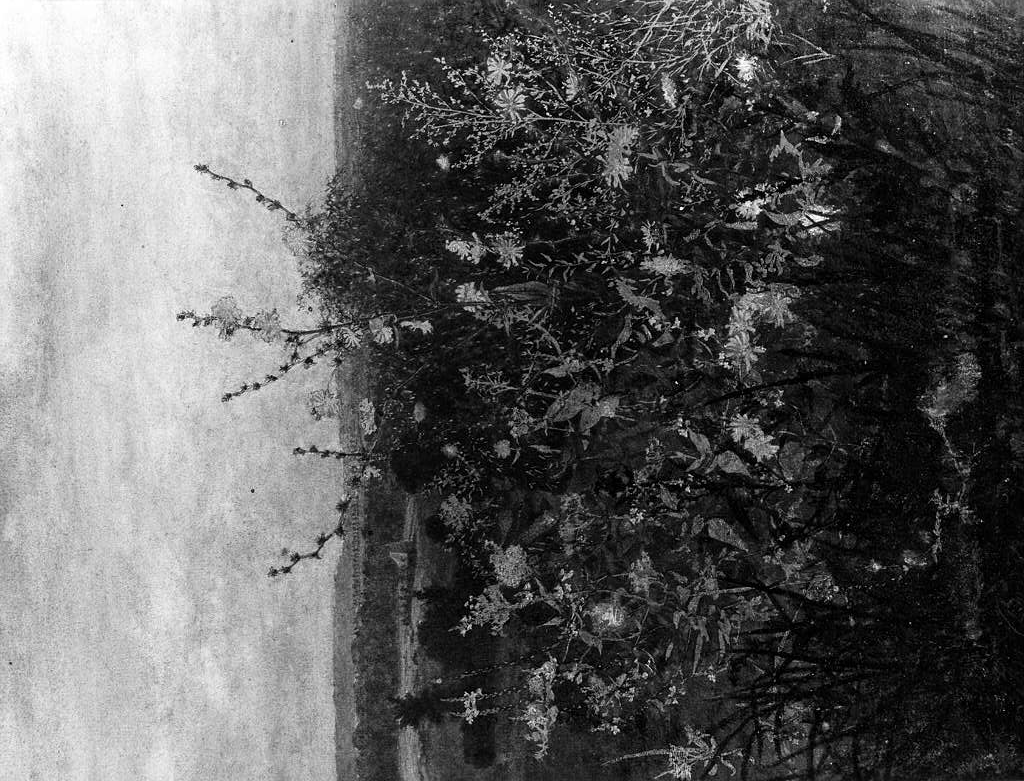
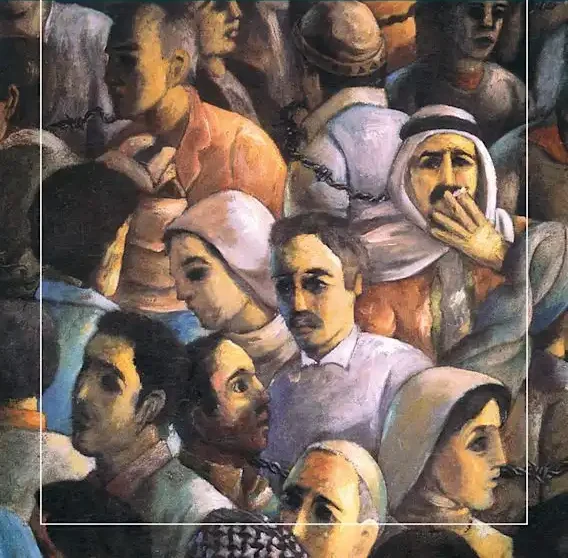
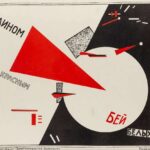
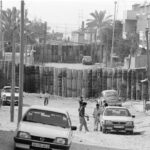
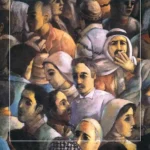
Leave a Reply